Elbow Tendonitis
What is Elbow Tendonitis?
The elbow tendonitis is typically referred to with this two condition. Tendonitis occurs in the common extensor tendon then is called as a Tennis Elbow. Tendinitis occurs in the common flexor tendon then is called as a Golfer’s Elbow.
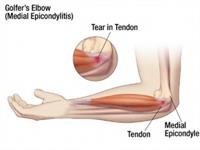
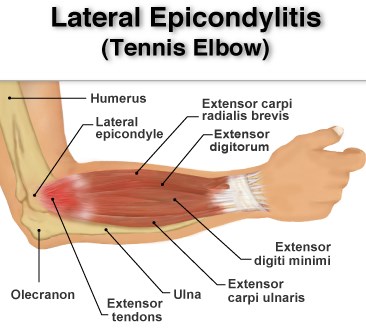
The Tendons are bands of soft tissue that connect your muscles to the bones. tendons are so tough but it is flexible and this can be large or small depending on the body structure. If your tendons are inflamed or have undergone any tears then it is known as tendonitis. Tendonitis is inflammation of a tendon. This will cause pain in the tendon or the surrounding area of the muscle tendon and may affect your activities of daily living.
A very common type of tendonitis noticed is lateral epicondylitis, commonly called tennis elbow or elbow tendinopathy. Tennis elbow causes pain in the posterior side of your elbow and forearm. This will happens due to damage in the tendons that flexed your wrist back and away from the palm of your hand.
Which are the Causes of Tendonitis in the Elbow Tendons?
- Repetitive movement.
- Heavy weight lifting.
- Prolonged Computer use.
- Repetitive Squeezing and twisting movements.
- Gardening.
- Painting.
- playing Tennis.
- Golf.
- Carpentry
- Typing
- Painting
- Raking
- Knitting
Who is mostly suffered from tendonitis in the elbow?
- Elbow tendinopathy is commonly seen in tennis players and other athletes. people who participate in other activities that require repetitive and vigorous use of the forearm, wrist, and/or hand are also at risk.
- Occupations such as auto repair professionals, butchers, cooks, carpenters, painters, and plumbers are all more prone to developing elbow tendinopathy than the average person.
- Person age between the ages of 35 and 50 are more prone to getting tennis elbow, but it can occur at any age.
What are the Symptoms of Elbow Tendonitis?
- Feeling pain, (Sometimes)burning pain.
- Tenderness on the bony part of the outside of the elbow or inside of the elbow.
- Pain can be aggravated by performing activities by your hands.
- Pain radiates up into your elbow.
- Stiffness and pain in the elbow in the morning or at night are also common and are worse when trying to use the hand or arm.
- Problems shaking hands, turning doorknobs, and holding objects. T
How do you know you are suffering from Tennis Elbow or Golfer’s Elbow?
- If you have a tennis elbow then elbow pain is on the outside of the elbow joint.
- If you have a Golfer’s Elbow is on the inside part of the elbow.
- A backhand in tennis needs a stable wrist. Over time, this put stress through on the tendons in the back of the wrist. This may lead to tendonitis at the elbow or tendinitis of the wrist. However, tennis is not usually the main reason for Tennis Elbow.
- Swinging a golf club can put stress on the inside of the elbow and cause to Golfer’s elbow. This rarely occurs.
- Tennis Elbow and Golfer’s Elbow are both types of tendonitis. They can be caused by repetitive stress or vibration.
How the Elbow Tendonitis Diagnosed?
- To diagnose elbow tendonitis, your doctor will perform a physical examination. The doctor will ask you to flex your arm, wrist, and elbow to see where the pain persists. after physical examination Your doctor may recommend the following tests to rule out other causes of your elbow pain:
- Electromyography (EMG): An EMG can rule out any nerve compression.
- Magnetic resonance imaging (MRI) scan: This can determine the extent of damage in your tendon or rule out other injuries.
- X-rays: To confirm the bone injuries of and around your elbow joint.
What are six Effective Ways to Treat Elbow Tendon Pain from Tendonitis?
Now, you know that you are suffering from this condition. The problem is so many people do not know how to get rid of tendonitis of the elbow. The quick answer to how to manage elbow tendonitis is explained below.
- Rest: If you repetitively use your elbow then it can be the worst pain. rest may allow the inflammation to progress through the normal healing process.
- Anti-inflammatory medications: Non-steroidal anti-inflammatory drugs (NSAIDs) can help to reduce elbow pain.
- Ice: ice packs help to reduce pain and limit damage to surrounding tissue. Cold packs or ice should be used for 15 to 20 minutes over the affected area.
- Bracing: An elbow brace may temporarily limit painful activity but shouldn’t typically be used every time. A tennis elbow brace applies pressure to the elbow tendon and helps to change the tendon’s forces
- Stretching: Stretching the wrist flexors or extensors can help to stimulate the injured tendons and promote mobility and healing. Hold stretches for thirty seconds and repeat 3 times. You should feel tension but not severe pain.
- Massage: Gently rubbing over the affected area can help to stimulate healing and break down scar tissue. Try massaging the tendon in all directions.
Alternative therapies
There have various other non-surgical treatment options for tendonitis in the elbow, following this:
Physiotherapy: Physical therapy can help to decrease elbow tendonitis pain. They can also increase your strength, flexibility, and range of motion. Your physical therapist may also perform massage, electrical stimulation, and other techniques to improve the healing process.
Platelet-rich plasma (PRP): PRP is a treatment designed to enhance the biological environment of the tissue. Platelets are known for their high concentration of growth factors, which can be injected into the tendons. PRP involves injections of a concentration of the patient’s platelets to accelerate healing.
Steroid injections: Steroid injections like cortisone injections are effective for anti-inflammatory treatments. Using a brace: Using a brace can decrease symptoms by allowing the muscles and tendons of the elbow and forearm to rest.
Surgical treatment for the elbow tendonitis.
If your symptoms of elbow tendonitis do not improve after six to twelve months of conservative treatment, then your doctor may recommend surgery.
- The most common surgical approach is called open surgery. This procedure will be making an incision over the elbow to remove the damaged muscle and tissue and the Healthy muscle is then reattached to the bone. Open surgery is usually performed as an outpatient procedure.
- Tennis elbow can also be repaired using small incisions and tiny instruments with arthroscopic surgery. Like open surgery, it is an outpatient procedure.
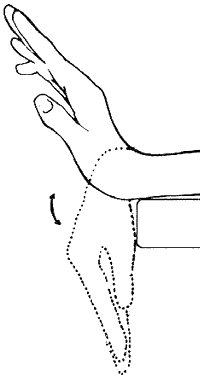
Here we explain the physiotherapy treatment for the elbow tendonitis in detail.
There has some exercise for elbow tendonitis.
Wrist Extensor Stretch
How to do it?
- To perform this stretch you have to loose your elbow, straighten the arm, and flex the wrist back as if signaling “stop.”
- It’s okay to use the opposite hand to help extend the hand gently.
- Hold this position for about fifteen seconds and repeat 5 times.

Wrist Flexor Stretch
How to do it?

- To perform this stretch take a position like a wrist extension stretch the same as the wrist extension, except the wrist is flexed down (opposite of “stop”). Use the opposite hand to help.
- Hold this position for fifteen seconds and repeat 5 times.
Stress Ball Squeeze
How to do it?
- Squeeze the ball using all of your fingers as much as possible without feeling any pain.
- Do this every day with 10 repetitions.
Finger Stretch
How to do it?

- Wrap a rubber band over your fingers on the hand about midway down the finger.
- Spread your fingers against the rubber band to get resistance.
- Repeat 10 times every day.
Wrist Turn
How to do it?
- Flexed the elbow at a right angle with the palm facing towards the ceilings.
- Turn the hand over slowly until the palm is facing the floor.
- Hold this position for five seconds and try to repeat 10 repetitions.
Fist clench
How to do it?
- Reduce grip strength is the main symptom of elbow tendonitis. Improving grip strength by building your muscles stronger can help to improve your ability to perform activities of daily living.
- To perform this exercise you have to Sit on a table with your forearm resting on the table.
- Grab a rolled-up towel or small ball in your hand.
- Squeeze the towel or ball in your hand and hold for ten seconds.
- Release and repeat ten times. do this on the other hand.
Supination with a dumbbell
How to do it?
- The supinator muscle is a long muscle in your forearm that attaches to your elbow.
- It is responsible for turning your palm up and down and is mostly involved in the movements that can induce tennis elbow.
- To perform this exercise you have to Sit in a chair and grab a two-pound dumbbell vertically in your hand, with your elbow resting on your knee. Let the weight of the dumbbell help to rotate your arm outward, turning your palm towards ceilings.
- Rotate your hand back in the other direction until your palm is facing the floor.
- Repeat twenty times on both sides. Try to isolate the movement to your lower arm, keeping your upper arm and elbow steady.
Wrist extension
How to do it?

- The wrist extensors are a group of muscles that are responsible for straightening your wrist, as when making the hand signal for “stop.”
- These tiny muscles that connect to your elbow are mostly subject to overuse, especially during racket sports.
- To perform this exercise you have to Sit in a chair and grab a two-pound dumbbell vertically in your hand, with your elbow resting on your knee.
- Your palm should be facing down, straighten your wrist by curling it away from your body.
- If this is too challenging, do the movement with no weight.
- Return to the initial position and repeat ten times on both sides.
Wrist flexion
How to do it?

- The wrist flexors are a group of muscles that utilize for the bending of the wrist.
- These tiny muscles that connect to your elbow are also subject to overuse, which can lead to pain and inflammation over the elbow.
- To perform this exercise you have to Sit in a chair and grab a two-pound dumbbell vertically in your hand, with your elbow resting on your knee.
- Your palm should be facing up, bend your wrist by curling it toward your body.
- Return to the initial position and repeat ten times on both sides.
Towel twist
How to do it?
- To perform this exercise you have to Sit in a chair, grab a towel with both hands, and your shoulder is relaxed.
- Twist the towel with both hands in opposite directions, as if you are wringing out the water of washed clothes.
- Repeat ten times, then repeat another ten times in the other direction.
Electrical Modalities:
Ultrasound :This is to have mechanical and thermal effects on the target tissue leading to improved metabolism, circulation, extensibility of connective tissue, and tissue regeneration.
Extracorporeal shockwave therapy (ESWT): This device generates shock or pressure waves that can be transferred to the tissue through the skin. This is supposed to improve blood circulation in the tissue and speed up the healing process.
Laser therapy: This tissue is treated with concentrated beams of laser light. This will helps to stimulate the circulation of blood and the body’s cell metabolism.
Transcutaneous electrical nerve stimulation (TENS): These devices transfer electrical impulses to the nervous system through the skin. These are supposed to keep the pain signals from reaching the brain.
Acupuncture: The acupuncture needles are inserted into the main points on the surface of the arm. Here, too, the aim is to decrease the perception of pain.
Elbow brace for elbow.
An elbow brace can be very effective treatment for a tendonitis like a tennis or golfer’s elbow,This also preventing further harm to the elbow joint during use. When choosing the best elbow brace for your needs be sure to consider all the most important factors including material, type, sizing, support level, and recommendations tailored to your needs.
Brace can be helpful to prevent or avoid an elbow injury.An elbow brace can be support and protects and helps with the treatment through the provision of enhanced stability, proprioception and medical-grade compression.

The elbow brace has an adjustable strap to increase and decrease compression and supports your elbow’s for natural movement without affecting its mobility.
There has different types of elbow brace found in the market.
- Basic Strap: Mueller Hg80 Tennis Elbow Brace
- Classic Strap: Rolyan Neoprene Tennis Elbow Strap
- Strap and Sleeve: Vulkan Advanced Elastic Elbow Support
- Premium Material Strap: Cramer Tennis Elbow Strap
Tips for Prevention
Exercises to strengthen and stretch your wrist and forearm muscles can be a big help in preventing elbow tendonitis. There has also a lot of things that you can do throughout your day to decrease the strain on your arms.
General tips: Avoid using the same hand and arm movements again and again. If that is not an option for you, wear a brace and take breaks as much as you can.
Some other tips:Learn to use your upper arm and shoulder muscles to take less strain on your elbow.Stick to the middle of your range of movement to avoid flexing or extending your arm all the way.Warm-up and stretch before sports and other activities where you repeat the same movements with your arm.
At work: Avoid working with a flexed wrist. Keep it extended if possible.
A couple of other ideas:Stick with slow movements instead of sharp, jerky ones.
Using tools: use the tools that have bigger grips. You can wear gloves or add padding to help. You should also:
grab objects with a looser grip; take some of the tension out of your hand, if you can. If you use a hammer, use one with padding to help absorb shock.
On the court: Make sure your racquet’s right for you. Low weight, larger grips, and softer strings may decrease the strain on your tendons. Also:
Ask a coach to help with your form. The correct technique can help to avoid injury. Stick with a 2 handed backhand. Use your whole lower body to put power into your stroke, not just your arm.
How Long Does Elbow Tendonitis Take to Heal?
- Healing depends on the severity of the tendonitis and its site.
- Many people may feel decreased pain in as little as 2 weeks, but it may take six months to a year for the tendon to fully heal.
- Surgery is rarely needed, but some physicians may use a corticosteroid shot to help you start rehabilitation.
Complications and risks of tendonitis in the elbow
- Infection.
- Loss of muscle strength around the elbow muscles and loss its flexibility.
- Nerve compression.
- Blood vessel damage.

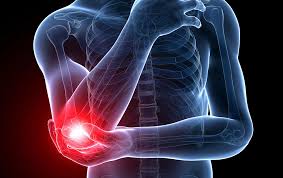
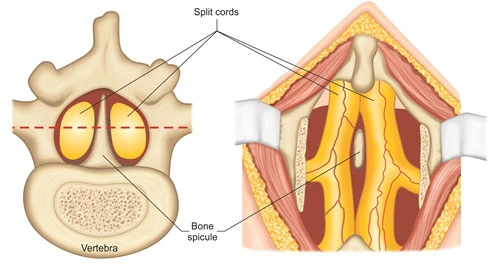

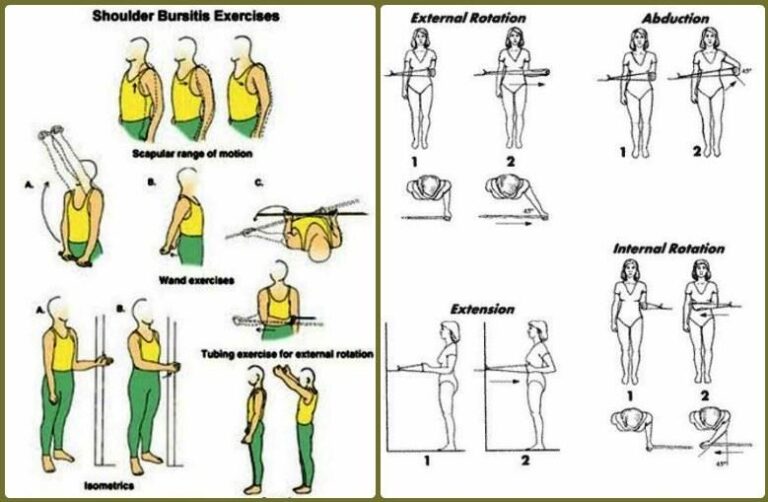
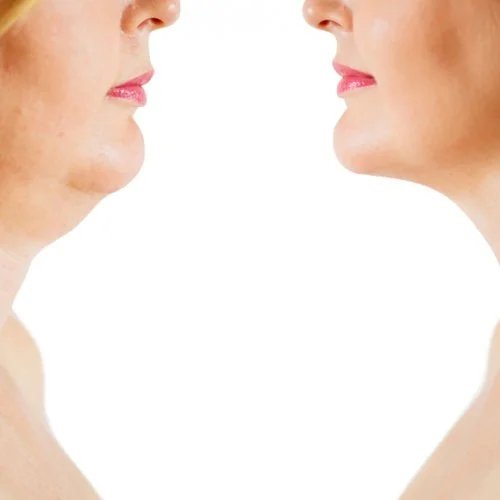
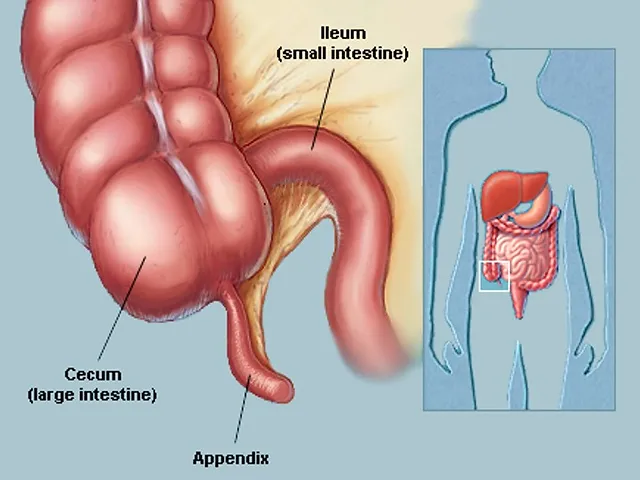

One Comment